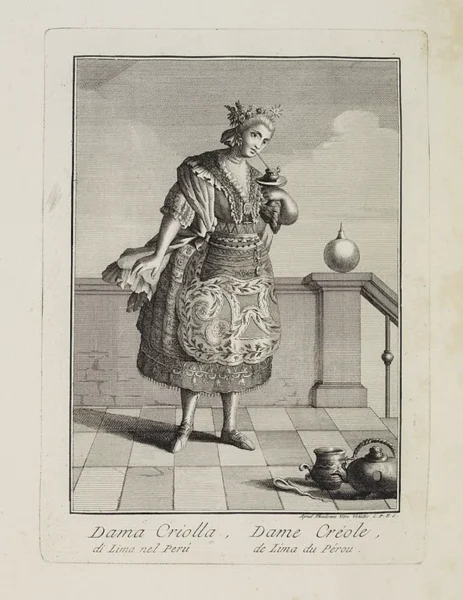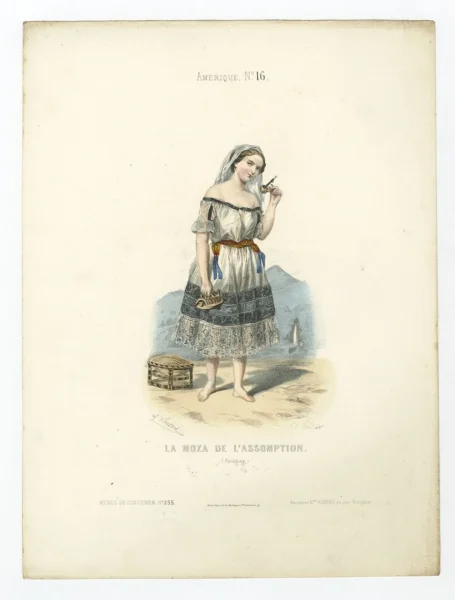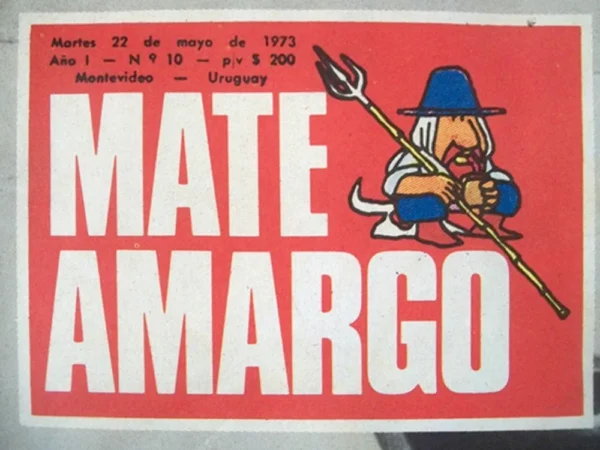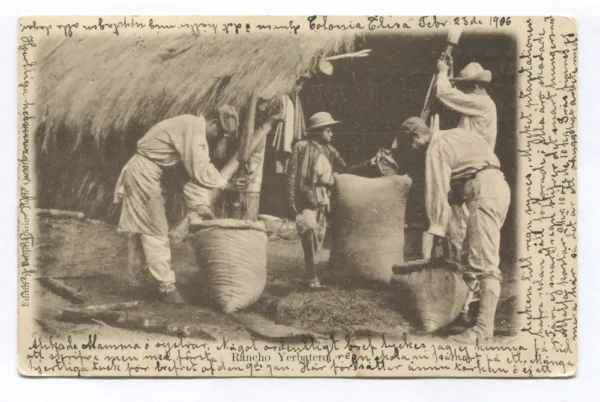Images
This image gallery presents some fascinating yerba mate illustrations I found during my research, and complements the illustrations published in my book, Sharing Yerba Mate.

Dama Criolla de Lima
In the 1770s, three different European artists created their own representation of a typical criolla (or woman of Spanish descent born in the New World) in Lima, Peru. In each, they placed a silver mate in the woman’s hand to identify her as being South American as opposed to European. Intriguingly, this particular illustration appears to be set in the artist’s native city of Venice rather than in Lima. Theodorum Viero, “Dama Criolla de Lima,” 1778, Racçolta di Stampe che representano.

La moza de L’Assomption
French artist Adolphe d’Hastrel fell in love with mate drinking during his 1839-41 tenure in the Río de la Plata region. He later painted a flurry of mate drinking “types” including a woman from Asunción (here), another from Buenos Aires, a provincial gaucho, and a Federalist rancher. The Parisian Musée de Costumes featured d’Hastrel’s female mate drinkers in an exhibit about typical dress around the world. In this illustration, the Paraguayan woman wears an off-the-shoulder lace blouse and belted skirt with bare feet common in the countryside. She holds a small gourd mate with a natural crook in her hand. Adolphe D’Hastrel, “La moza de L’Assomption,” (Paris: Edit. Aubert, ca. 1850).

Mate Amargo
As Uruguay careened towards dictatorship in 1973, some surviving members of the National Liberation Movement—Tupamaros launched a new magazine called Mate Amargo (Bitter Mate). The editorial team adopted the figure of the gaucho with a trident (or three-pointed spear) sipping mate as their logo. Due to efforts like this, yerba mate became increasingly associated with the left during and after the 1973-1985 Uruguayan dictatorship. Mate Amargo, May 22, 1973, Courtesy of Biblioteca Nacional de Uruguay.

Nanduty Football Advertisement
Yerba companies began associating their product with soccer (or football) players shortly after their inception. Here, the British and Brazilian duo Mackinnon and Coehlo reproduced a letter signed by the Argentine national team expressing their appreciation for the yerba they were gifted by the company to take with them to the World Cup. Nanduty advertisment, Revista Aconcagua (Aug. 1930).

Rancho Yerbatero Postcard
Postcards provided images of yerba mate a new, easier way to travel. In post-war Paraguay, this new genre of visuals focused on the stages of production of yerba rather than on the consumption of mate—in distinction to Argentina and Uruguayan postcards which highlighted consumption. Here, men grind the yerba in large sacks in front of a Paraguayan “rancho yerbatero” (or yerba ranch). A boy, who appears to be of at least partial African descent, checks the grade of the yerba. The postcard sender scribbled a note in from Colonia Elisa along the margins. Postcard, “Rancho Yerbatero” (1906), ed. Juan Quell, Asunción, courtesy of Lafayette College Special Collections.